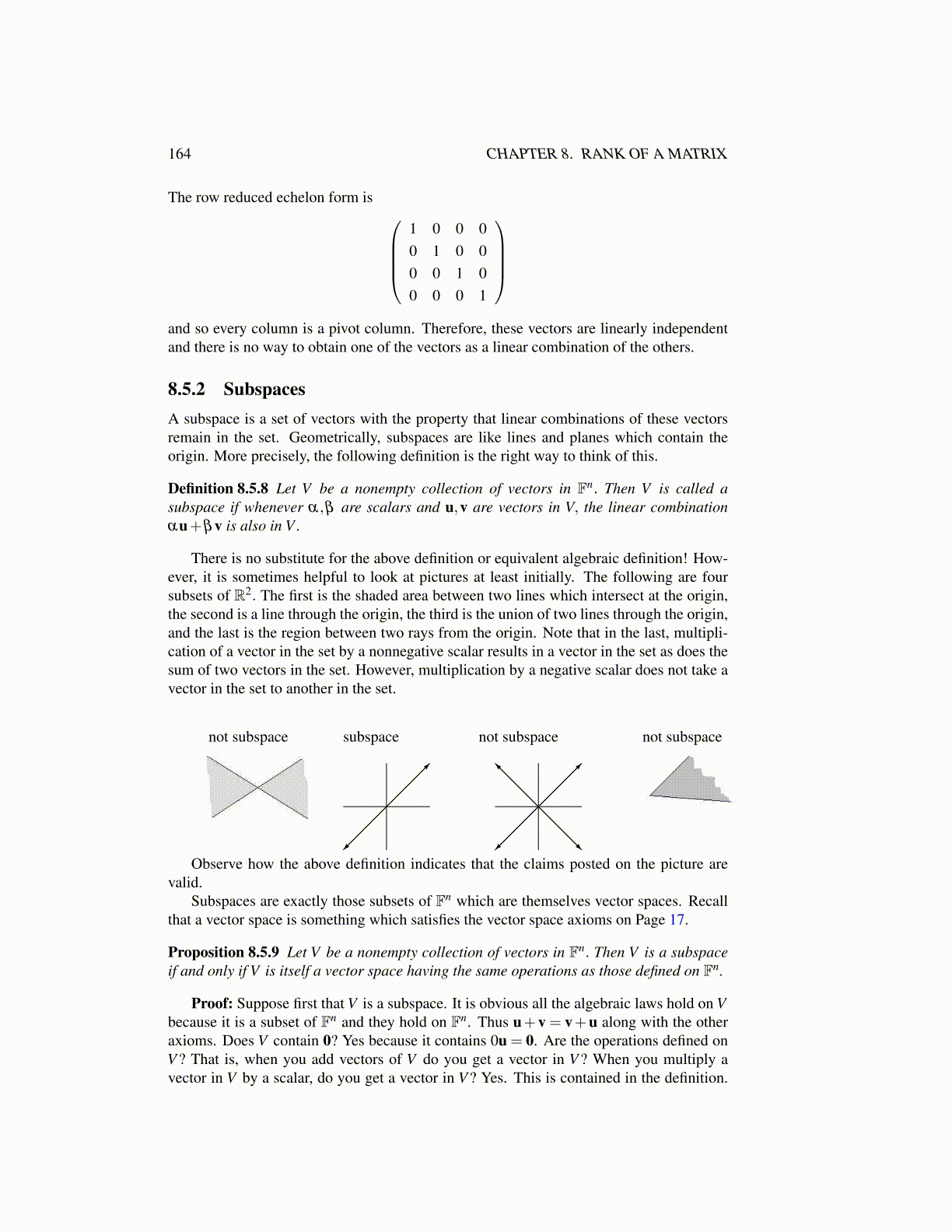
164 CHAPTER 8. RANK OF A MATRIX
The row reduced echelon form is 1 0 0 00 1 0 00 0 1 00 0 0 1
and so every column is a pivot column. Therefore, these vectors are linearly independentand there is no way to obtain one of the vectors as a linear combination of the others.
8.5.2 SubspacesA subspace is a set of vectors with the property that linear combinations of these vectorsremain in the set. Geometrically, subspaces are like lines and planes which contain theorigin. More precisely, the following definition is the right way to think of this.
Definition 8.5.8 Let V be a nonempty collection of vectors in Fn. Then V is called asubspace if whenever α,β are scalars and u,v are vectors in V, the linear combinationαu+βv is also in V .
There is no substitute for the above definition or equivalent algebraic definition! How-ever, it is sometimes helpful to look at pictures at least initially. The following are foursubsets of R2. The first is the shaded area between two lines which intersect at the origin,the second is a line through the origin, the third is the union of two lines through the origin,and the last is the region between two rays from the origin. Note that in the last, multipli-cation of a vector in the set by a nonnegative scalar results in a vector in the set as does thesum of two vectors in the set. However, multiplication by a negative scalar does not take avector in the set to another in the set.
not subspace not subspacesubspace not subspace
Observe how the above definition indicates that the claims posted on the picture arevalid.
Subspaces are exactly those subsets of Fn which are themselves vector spaces. Recallthat a vector space is something which satisfies the vector space axioms on Page 17.
Proposition 8.5.9 Let V be a nonempty collection of vectors in Fn. Then V is a subspaceif and only if V is itself a vector space having the same operations as those defined on Fn.
Proof: Suppose first that V is a subspace. It is obvious all the algebraic laws hold on Vbecause it is a subset of Fn and they hold on Fn. Thus u+v = v+u along with the otheraxioms. Does V contain 0? Yes because it contains 0u = 0. Are the operations defined onV ? That is, when you add vectors of V do you get a vector in V ? When you multiply avector in V by a scalar, do you get a vector in V ? Yes. This is contained in the definition.